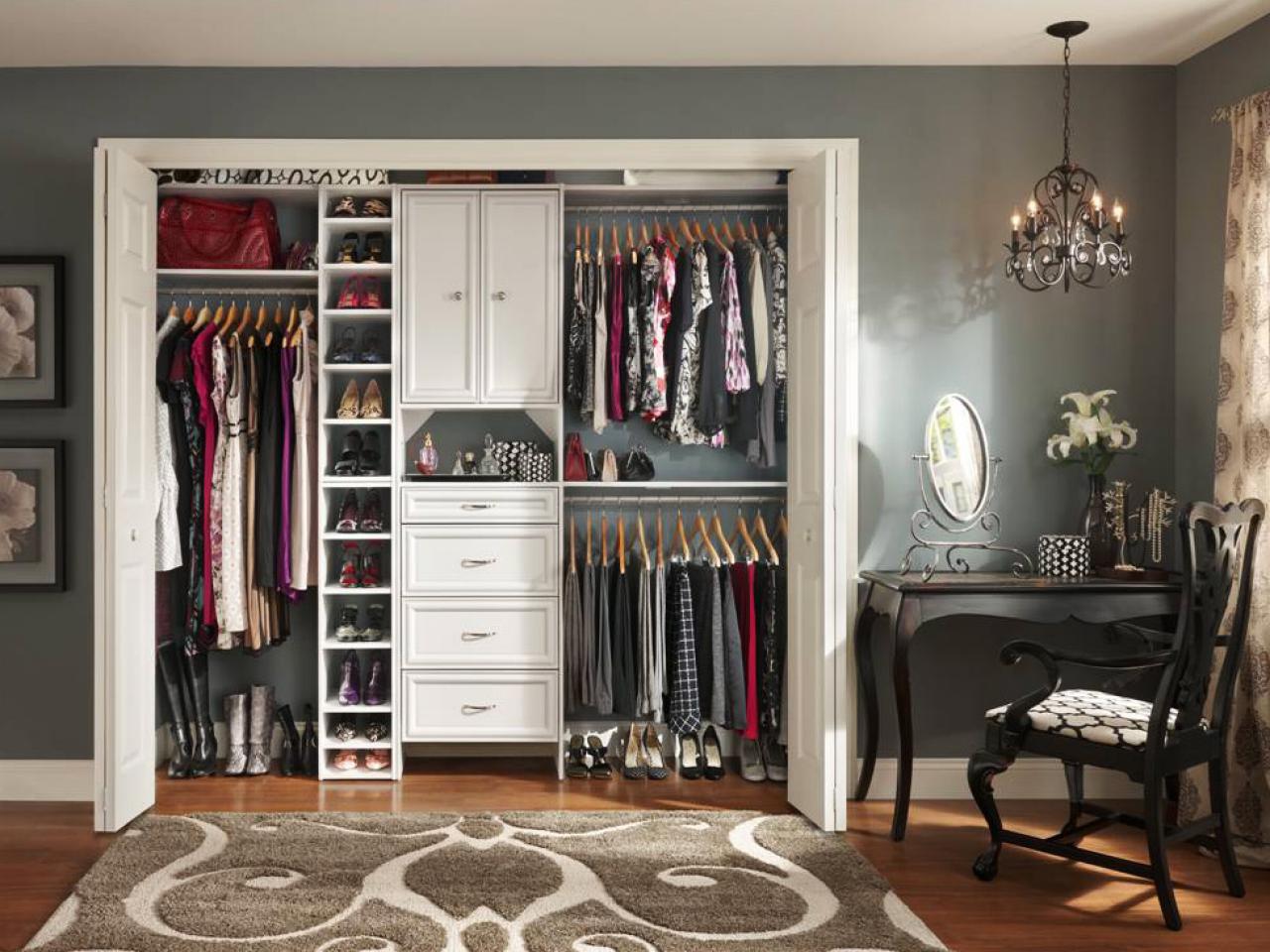A standard closet should be at least 24 inches deep, 48 inches wide, and 84 inches high. A walk-in closet should be a minimum of 6×6 feet.
Closets come in various shapes and sizes, but determining the ideal dimensions can be a crucial decision when planning your storage space. Whether you’re renovating your existing closet or designing a new one, understanding the appropriate size is essential for functionality and organization.
A well-organized closet not only enhances the aesthetics of your room but also makes finding and storing your belongings more convenient. By considering the purpose and usage of the closet, you can determine the perfect size that will suit your needs and lifestyle. Let’s explore the factors that impact the size of a closet and how you can optimize the space to meet your storage requirements.

Credit: www.dimensions.com
Factors To Consider
Consider the space needed, taking into account items like clothing, shoes, and accessories, to determine the ideal closet size for your storage requirements. Assess your storage needs and the available space in your room to strike a balance between functionality and aesthetics.
Every home deserves a functional and well-designed closet, but finding the right size can be a challenge. Before embarking on your closet renovation project, there are several important factors to consider. By understanding the available space in your home, your storage needs, and other key considerations, you can make an informed decision about how big your closet should be.Available Space
Assessing the available space is crucial when determining the ideal size for your closet. Measure the dimensions of the room where the closet will be located to determine how much space you have to work with. Consider any architectural features or obstructions that might impact the closet’s size and configuration. Additionally, factor in the placement of doors and windows as these could limit the available wall space for your closet. By understanding the available space, you can make the most efficient use of the area and ensure your closet fits seamlessly into the room’s design.Storage Needs
Another important factor to consider when determining the size of your closet is your storage needs. Think about the items you plan to store in your closet, such as clothing, shoes, accessories, or even household items. Make a list of your storage requirements and estimate the amount of space each category of items will need. For example, if you have a large shoe collection, you’ll need dedicated space for shoe racks or shelves. If you have a lot of hanging clothes, you’ll need ample hanging space. By understanding your storage needs, you can design a closet that meets your requirements and avoids unnecessary clutter. It’s also important to consider any future storage needs you may have. Will your wardrobe grow over time? Do you plan to store seasonal items in your closet? By accounting for potential future storage needs, you can ensure your closet remains functional and organized for years to come.Other Considerations
While available space and storage needs are crucial considerations, there are a few other factors to take into account. Consider the overall layout and design of your home, as the closet’s size should complement the style of the space. Additionally, think about any specific organizational features or accessories you might want in your closet, such as built-in drawers, shelves, or a dressing area. These features can impact the overall size and configuration of the closet. It’s important to strike a balance between the size of the closet and the available space in your home. A closet that is too large can dominate a room, while a closet that is too small may not provide enough storage. By considering the available space, your storage needs, and other factors unique to your home, you can determine the perfect size for your closet renovation project. With careful planning, you can create a functional and stylish storage solution that enhances your home’s organization and aesthetics.Standard Closet Sizes
Reach-in Closets
Reach-in closets typically range from 3 to 8 feet in width.
- Minimum width: 3 feet
- Optimal width: 6 feet
- Maximum width: 8 feet
Walk-in Closets
Walk-in closets are usually larger, starting at 6 feet wide.
- Small walk-in: 6 x 6 feet
- Medium walk-in: 6 x 9 feet
- Large walk-in: 10 x 10 feet or more
Design Considerations
When planning the size of a closet, it is important to consider the amount of clothing and storage needs. A larger space allows for more storage and organization, while a smaller space can be efficient for minimalists or in tight quarters.
Carefully evaluating the individual’s needs and available space is crucial in determining the optimal size for a closet.
## Design Considerations Shelving and Hanging Space When planning a closet layout, consider the amount of shelving and hanging space needed. Adequate shelving allows for organized storage of folded items, while sufficient hanging space accommodates dresses, suits, and other garments that need to be hung. Accessibility Accessibility is key in closet design to ensure items are easily reachable. Aim for a mix of high and low hanging rods to make use of vertical space efficiently. Incorporate pull-out bins or baskets for storing small accessories like belts and scarves. Start by optimizing shelving and hanging space. Next, focus on maximizing accessibility within the closet. Combine high and low hanging rods for efficient use of space. Utilize pull-out bins for storing small accessories. Consider installing adjustable shelves and rods for customizable storage options. Utilize adjustable features for customized storage solutions. Incorporate pull-out accessories for easy organization. Optimize shelving and hanging space for efficient storage.Custom Closet Options
Your custom closet options should be based on the size requirements to meet your storage needs effectively. Consider the dimensions of your space and determine how big your closet should be for maximum functionality.
When it comes to designing a custom closet, it’s important to consider the different options available that can maximize your storage space and make your closet more functional. With the right custom closet options, you can create a space that is tailored to your specific needs and preferences.
Adjustable Shelving
One of the key features of a well-designed custom closet is the inclusion of adjustable shelving. This type of shelving allows you to easily modify the height and configuration of the shelves to accommodate items of various sizes. Whether you need to hang long dresses or store bulky winter coats, adjustable shelving ensures that you can make the most efficient use of your closet space. Plus, as your storage needs change over time, you can easily reconfigure the shelving to suit your new items.
Specialized Storage
In addition to adjustable shelving, another custom closet option to consider is specialized storage. This includes features such as built-in shoe racks, tie and belt holders, jewelry trays, and built-in laundry hampers. By incorporating specialized storage solutions into your custom closet design, you can keep all of your belongings neatly organized and easily accessible. No more searching for that missing shoe or struggling to find a matching belt—everything will have its dedicated place within your custom closet.
Adding specialized storage also helps you maximize your closet’s space by utilizing every nook and cranny effectively. With designated spots for specific items, you can make the most of your closet’s vertical space and create a clutter-free environment.
Maximizing Closet Space
Vertical Storage Solutions
Utilizing vertical space can significantly increase the storage capacity of your closet. Install shelving units or hanging organizers to make the most of the height of the closet. Consider adding stackable bins or baskets to efficiently store items like shoes, accessories, or seasonal clothing. Maximize vertical space by incorporating over-the-door organizers or hooks for scarves, belts, or purses, creating a well-organized and clutter-free closet environment.
Organizational Systems
Incorporating smart organizational systems can help optimize every inch of your closet. Invest in customizable closet systems that allow you to adjust the configuration according to your storage needs. Utilize dividers, bins, and labels to keep items organized and easily accessible. Incorporating a mix of hanging rods, shelving, and drawers can provide a versatile organization solution for various types of clothing, accessories, and personal belongings.

Credit: www.hgtv.com
Closet Organization Tips
When it comes to organizing your closet, having a well-structured system in place can make a world of difference. The right organization tips can not only help maximize your storage space but also make it easier to find and access your belongings. Let’s delve into some essential closet organization strategies that can help you transform your space into an efficient and tidy storage area.
Decluttering Strategies
One of the first steps towards achieving a well-organized closet is to declutter. Start by sorting through all your items and decide what to keep, donate, or discard. Be ruthless and get rid of items you no longer use or need. Create separate piles for clothing, shoes, and accessories you want to keep and those you no longer use. This process helps create more space and makes it easier to organize what’s left.
Seasonal Rotation
Managing seasonal items is a crucial aspect of closet organization. As the seasons change, it’s important to rotate your wardrobe to ensure easy access to the appropriate clothing. Consider storing off-season items in plastic containers or vacuum-sealed bags to free up space in your closet. Label them clearly to avoid any confusion. When the new season arrives, simply swap out the items, making it easier to keep your closet tidy and efficient.
Adding Functionality
When it comes to designing a closet, it’s important to not only focus on its size but also its functionality. No matter how big or small your closet is, ensuring that it is functional will optimize its usability and make organizing your belongings a breeze.
Closet Lighting
Closet lighting is an essential aspect of adding functionality to your closet. A well-lit closet not only makes it easier to find your favorite pair of shoes or that perfect shirt but also helps to prevent accidents and mishaps. Imagine trying to rummage through a dark closet early in the morning – it’s not a pleasant experience!
Installing adequate lighting in your closet is a simple yet effective way to make it more functional. Consider using bright LED lights or track lighting that can illuminate every corner of your closet. Position the lights strategically to minimize shadows and ensure that all areas are well-lit.
Mirror Installation
Incorporating a mirror into your closet design is another great way to add functionality. A mirror serves two purposes – it helps you get dressed and can also create an illusion of a bigger space. When choosing a mirror, make sure it is of the right size to fit your needs.
Having a mirror inside your closet eliminates the need to run back and forth to the bedroom to check how an outfit looks. It also allows you to experiment with different combinations and styles without leaving the closet. Whether it’s a full-length mirror or a compact one, adding a mirror will make your closet more functional and save you time in your daily routine.
Budgeting For A Closet
In the process of budgeting for a closet, it’s crucial to consider various cost factors that can impact the final price tag. Another significant decision is whether to opt for DIY or professional installation.
Cost Factors
- Size of the closet
- Material quality
- Additional features like lighting
- Customization options
Diy Vs. Professional Installation
When considering DIY vs. professional installation, keep in mind the following factors:
- DIY: Cost-effective option for those with time and skill
- Professional: Ensures precision and expertise
Ultimately, the size of your closet and your specific needs will determine the ideal approach.

Credit: www.dimensions.com
Frequently Asked Questions Of How Big Should A Closet Be
What Is The Ideal Size For A Closet?
The ideal size for a closet varies based on the items you plan to store. A standard rule of thumb is to allocate 60 inches of space for hanging clothes, with an additional 24 inches for shoes and shelves. Consider your specific storage needs for a custom fit.
How Can I Maximize Closet Space?
To maximize closet space, consider adding shelves, bins, and dividers to keep items organized. Utilize vertical space with hanging organizers, and invest in slim hangers to optimize hanging space. Evaluate your storage needs and explore custom organization solutions for an efficient closet layout.
What Are The Key Factors To Consider When Designing A Closet?
When designing a closet, consider the available space, your storage needs, and your preferred organizational system. Evaluate the types of items you plan to store and customize the layout accordingly. Take into account your daily wardrobe choices and habitually used items for a tailored design approach.
Conclusion
The size of a closet greatly depends on individual needs, available space, and personal preferences. While there are general guidelines to follow, such as allowing enough room for clothing, accessories, and storage, the ideal closet size varies from person to person.
By carefully considering your specific requirements and utilizing proper organization techniques, you can maximize the functionality and efficiency of any closet space. Take the time to assess your needs and create a closet that suits you best.
{ “@context”: “https://schema.org”, “@type”: “FAQPage”, “mainEntity”: [ { “@type”: “Question”, “name”: “What is the ideal size for a closet?”, “acceptedAnswer”: { “@type”: “Answer”, “text”: “The ideal size for a closet varies based on the items you plan to store. A standard rule of thumb is to allocate 60 inches of space for hanging clothes, with an additional 24 inches for shoes and shelves. Consider your specific storage needs for a custom fit.” } } , { “@type”: “Question”, “name”: “How can I maximize closet space?”, “acceptedAnswer”: { “@type”: “Answer”, “text”: “To maximize closet space, consider adding shelves, bins, and dividers to keep items organized. Utilize vertical space with hanging organizers, and invest in slim hangers to optimize hanging space. Evaluate your storage needs and explore custom organization solutions for an efficient closet layout.” } } , { “@type”: “Question”, “name”: “What are the key factors to consider when designing a closet?”, “acceptedAnswer”: { “@type”: “Answer”, “text”: “When designing a closet, consider the available space, your storage needs, and your preferred organizational system. Evaluate the types of items you plan to store and customize the layout accordingly. Take into account your daily wardrobe choices and habitually used items for a tailored design approach.” } } ] }
